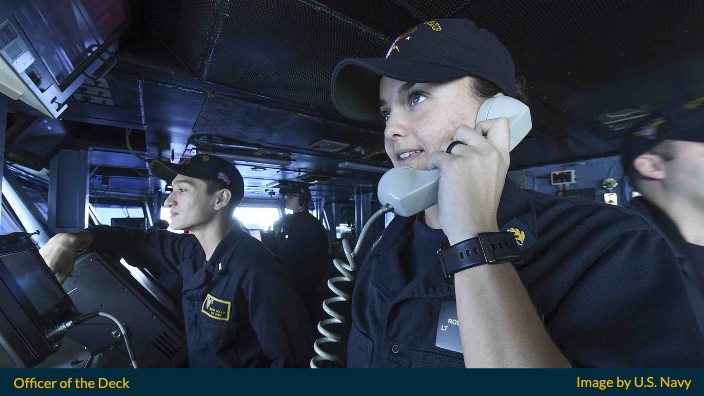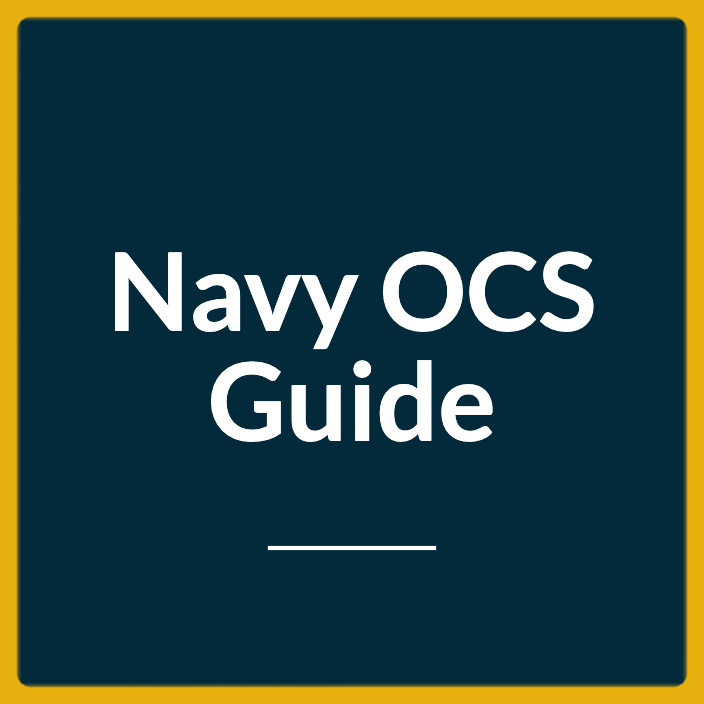A Navy Officer of the Deck (OOD) isn’t just giving orders—it’s about keeping the ship safe, the crew secure, and operations running without a hitch. One bad call can have serious consequences.
This role demands leadership, fast decision-making, and sharp communication. The OOD oversees navigation, manages security, and ensures everything stays on track. It’s a critical job, not just another billet.
If you’re interested in how a naval vessel functions, this is one role you need to understand. The OOD is the ship’s eyes and ears, making real-time choices that affect everyone on board.
It’s not just about following a checklist—it’s about mastering naval operations, staying aware of every moving part, and handling high-pressure situations without hesitation.
Let’s break down what it really takes to be an effective Navy OOD.
What Does OOD Stand For?

OOD stands for Officer of the Deck. In the simplest terms, the OOD is in charge of the ship when the commanding officer is not on the bridge.
It’s a role of monumental significance, as the OOD must maintain the safety, direction, and overall operation of the vessel.
The OOD position is an extra duty for a Navy officer. It is a highly specialized and demanding job with far-reaching responsibilities, which includes navigation, engineering, communications, search and rescue operations, and even damage control.
Responsibilities of a Navy OOD
Navigational Oversight
- Charting the Course: One of the primary duties of the OOD is to set the ship’s course based on directives from the Commanding Officer (CO).
- Weather Monitoring: Understanding weather conditions is crucial for navigation. The OOD pays keen attention to weather forecasts and adjusts the course as needed.
Security and Safety
- Security Watch: The OOD ensures the security of the ship, overseeing measures like screening personnel who come aboard and monitoring radar for potential threats.
- Emergency Procedures: In the case of an emergency, the OOD takes command until the CO can assume control.
Communication
- Bridge-to-Bridge: The OOD handles communications between the ship and other vessels, making sure the interactions adhere to international maritime law.
Record-Keeping
- Deck Log: A detailed deck log must be maintained, documenting all significant events and decisions made during the OOD’s watch.
According to Navy Regulations, the OOD acts under the authority of the Commanding Officer and carries out the ship’s routine and orders (Navy Regulations Article 1037).
Who Can Become an OOD?
Qualifications and Training
Before dreaming about taking the helm, let’s talk about qualifications:
- Rank: You need to be an officer, usually starting as an Ensign, the lowest officer rank in the Navy.
- Training: Completion of the Division Officer Course is a prerequisite.
- Certification: Aspiring OODs must pass the OOD qualification process, which involves both written and oral exams. A Personnel Qualification Standards (PQS) must be completed before assuming this role.
Skill Set Required
- Strong Communication Skills: Must be able to convey complex information clearly.
- Quick Decision-making: When you’re in the middle of the ocean, a wrong decision can cost lives.
- In-depth Technical Knowledge: Familiarity with naval operations, engineering systems, and maritime law is essential.
A Day in the Life of an OOD
Expect to be busy. You’ll likely begin your day with a briefing from the previous OOD, catch up on the deck log, and then dive into monitoring navigational equipment.
Your eyes will frequently dart between the radar screen, navigational charts, and the vast ocean ahead. Your ears will be attuned to every sound, from the engine’s hum to the chatter on the radio.
After your OOD duty, you’ll return to your regular job, such as a Division Officer or a Department Head.
Why This Role Matters
The OOD is the glue that holds the ship’s operations together. It’s a role that demands not just technical expertise but also the wisdom to make split-second decisions that could impact the entire vessel and everyone on board.
In a 2017 report by the U.S. Naval Institute, it was emphasized how crucial competent OODs are to the Navy’s overall effectiveness.
Conclusion
Understanding the role of a Navy OOD provides an insider look into the critical functions aboard a naval vessel. From ensuring safe navigation to maintaining security and making life-altering decisions, an OOD’s responsibilities are manifold and significant.
So, if you have aspirations of becoming an officer in the Navy, the position of OOD is both a challenging and rewarding career path to consider.

